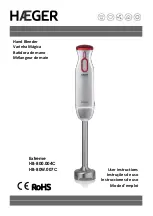
Service Page EN-25
Some of the possible contents
(e.g. mercury, cadmium and lead)
are toxic and, if improperly dis-
posed of, can have adverse ef-
fects on the environment. Heavy
metals, for instance, can have
detrimental health effects on hu-
mans, animals and plants and ac-
cumulate in the environment and
food chain, and then enter the
body indirectly through the con-
sumption of food.
There is a high risk of fire with
old lithium batteries. Special care
must therefore be taken to prop-
erly dispose of old lithium batter-
ies and rechargeable batteries.
Improper disposal can also lead
to internal and external short cir-
cuits due to thermal effects (heat)
or mechanical damage. A short
circuit can lead to a fire or an ex-
plosion and have serious conse-
quences for people and the envi-
ronment. It is therefore important
to tape off the terminals of lithium
batteries and rechargeable bat-
teries before disposing of them to
prevent an external short circuit.
Single-use and rechargeable bat-
teries that are not built into the
device should be removed before
disposal and then disposed of
separately.
Please only dispose of single-use
and rechargeable batteries in a
discharged state!
If possible, use rechargeable bat-
teries in place of disposable bat-
teries.
*) labelled with:
Cd = Cadmium
Hg = Mercury
Pb = Lead
Packaging
Our packaging is made
of environmentally
friendly, recyclable ma-
terials:
– Outer packaging made of
cardboard
– Moulded parts made of
foamed, CFC-free polystyrene
(PS)
– Films and bags made of poly-
ethylene (PE)
– Tension bands made of poly-
propylene (PP)
– Saving energy also protects
against excessive global
warming. Your new appliance
uses little energy due to its
environmentally friendly insu-
lation and technology.



































